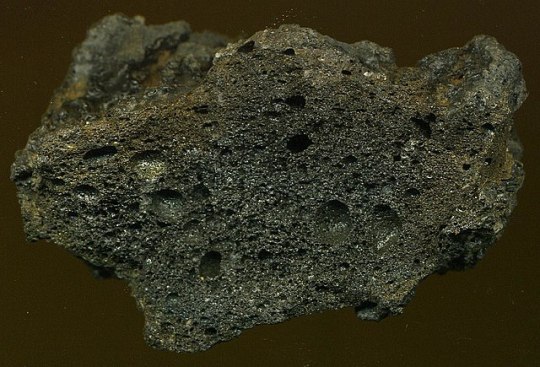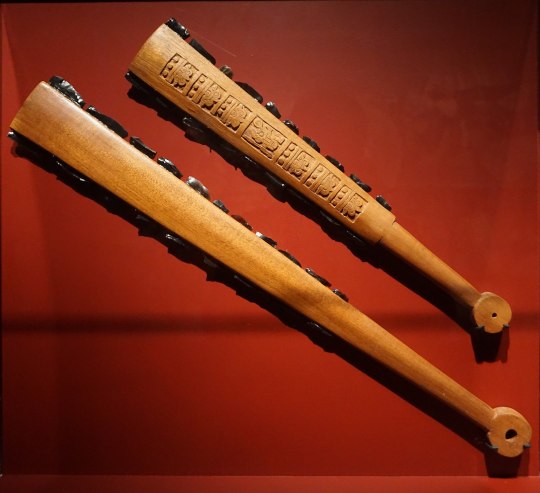#conchoidal fractures babey! obsidian is so pretty
Explore tagged Tumblr posts
Text
Rock Swag Tournament Round 1: Igneous Rocks Part 12


So many of your here may know of obsidian. I haven't a clue why.
For those of you unfamiliar, obsidian is a form of volcanic glass, but it is not the only one! Tachylite is obsidian's much less well-known sibling.
Now, I'm going to go against everything I talked about in earlier posts, because while obsidian is black (or sometimes a reddish-brown) it is FELSIC! That babey has very few of those dark mafic minerals, but the little bit of iron and magnesium combined with the quick cooling (and therefore lack of individual crystals) gives obsidian this dark color.
Tachylite on the other hand is mafic! It, like obsidian is a volcanic glass that cools very quickly and lacks mineral grains, but it does contain all those dark mafic minerals at the top of Bowen's Reaction Series.
Also, I wanted to take the time to correct a small misconception in that post about obsidian weaponry. And I'm not here to spoil the fun, don't worry. I do adore that post and it makes me laugh whenever I see it. This is instead, a bit of an archaeology lesson. More under the cut.
While the geologist in question argues that an obsidian knife would make a poor weapon because it volcanic glass, I am here to say that obsidian was actually frequently used for weaponry and tools (and that ended up being a very good thing for archaeologists)!
Now, I will admit that these obsidian artifacts are often on a smaller scale: things like arrowheads and small blades and not long knives. One form of weaponry, the macuahuitl, was made by embedding small obsidian blades into a club!

The reason obsidian is actually an effective weapon is because it is easy to work with and very sharp. While it is certainly more prone to breakage than metal when banged against hard objects, it makes for an extremely sharp and effective blade when used for slicing, rather than to cause blunt force trauma. In fact, a freshly broken piece of obsidian can be sharper than a steel blade. So it certainly isn't out of the question to make an use an obsidian knife. You just might have to be a bit more careful when swinging it around near hard surfaces.
I should also note that these artifacts were made through a process called knapping, wherein someone strategically chips away at a piece of material (often flint, obsidian, or some other material that has conchoidal fracture, or fractures in a way that shows concentric lines similar to growth lines on a shell) to form a shaped tool, weapon, blade, etc.

Here's an obsidian arrowhead. It has been shaped to have notches where it could be affixed to the shaft of an arrow, a pointed tip, and sharp, thin edges that would cut through the hide of the creature being hunted.
So, obsidian was used for tools and weapons that necessitated slicing more than banging. And an obsidian sword probably wouldn't be very effective. If you bang it against the stone battlement by accident, it'll break. And I could believe that the force needed to stab someone clean through with a sword would cause an obsidian blade to break. I haven't tested this theory. But when used as a small cutting blade affixed to something like a club or an arrow, its pretty effective! If they weren't effective, people wouldn't have used them so much throughout history.
And that brings me to why obsidian artifacts are so important for archaeology! Volcanoes have their own unique geochemical signatures, which means we can trace pieces of obsidian back to the volcano from which it erupted.
This is incredibly helpful for archaeologists who want to learn about things like trade and travel between ancient peoples. If you find an obsidian arrowhead a thousand miles from the volcano from which that obsidian came, you know that a person had to travel a thousand miles to move that piece of obsidian. Volcanic rocks don't really move a thousand miles from their source without a little human intervention. A real person at some point in time had to help that rock out! It's endlessly fascinating, that least to me.
Anyway, if this rant proves anything, it is that I, too, would be prone to getting hit by a baseball bat while I rant about obsidian blades in a somewhat more archaeologically-informed way!
82 notes
·
View notes